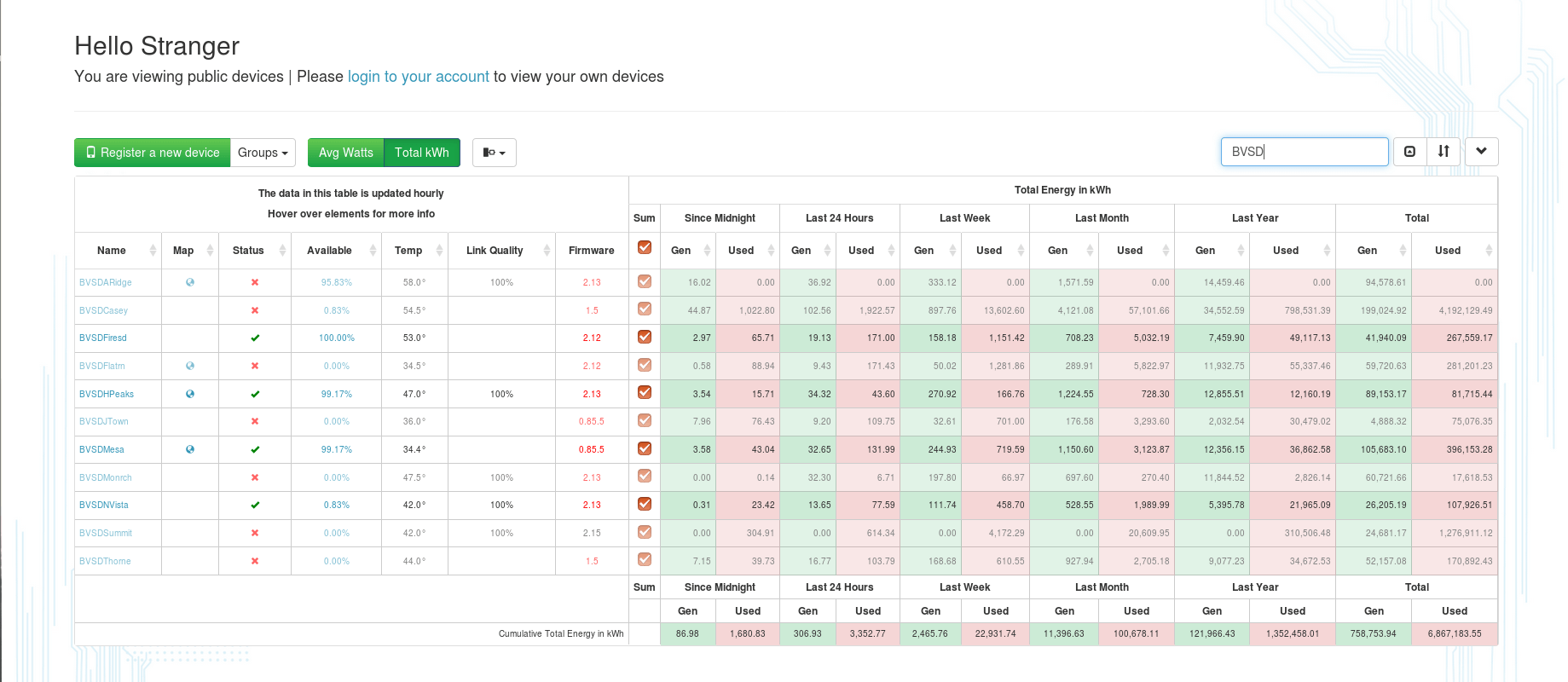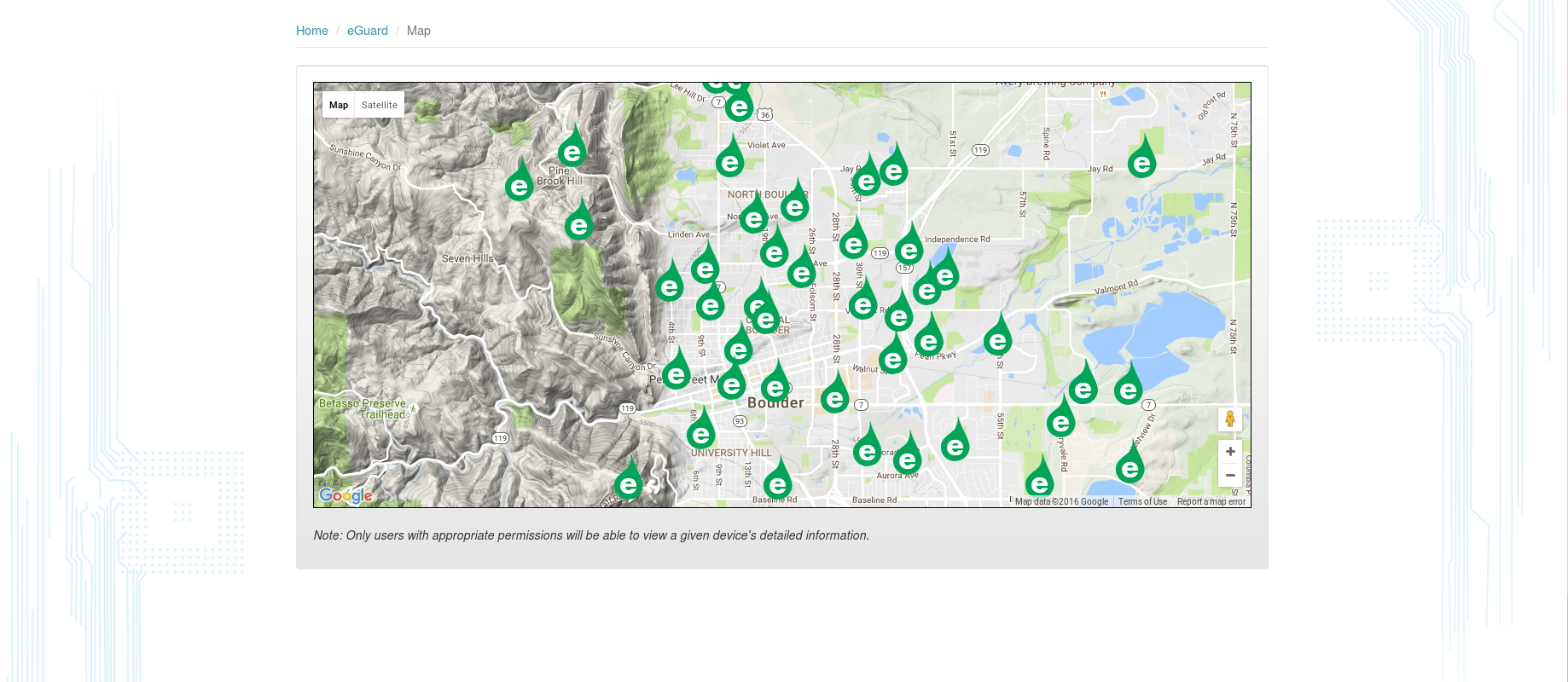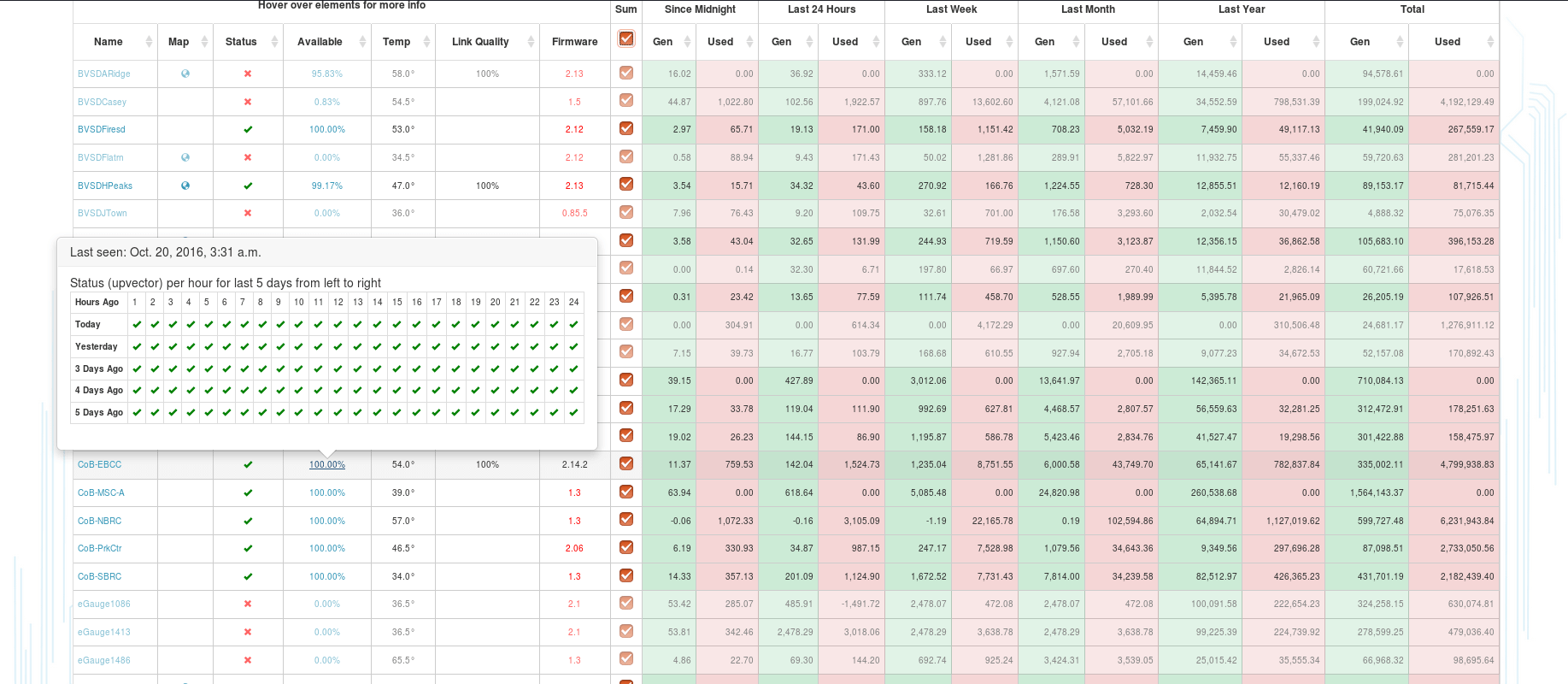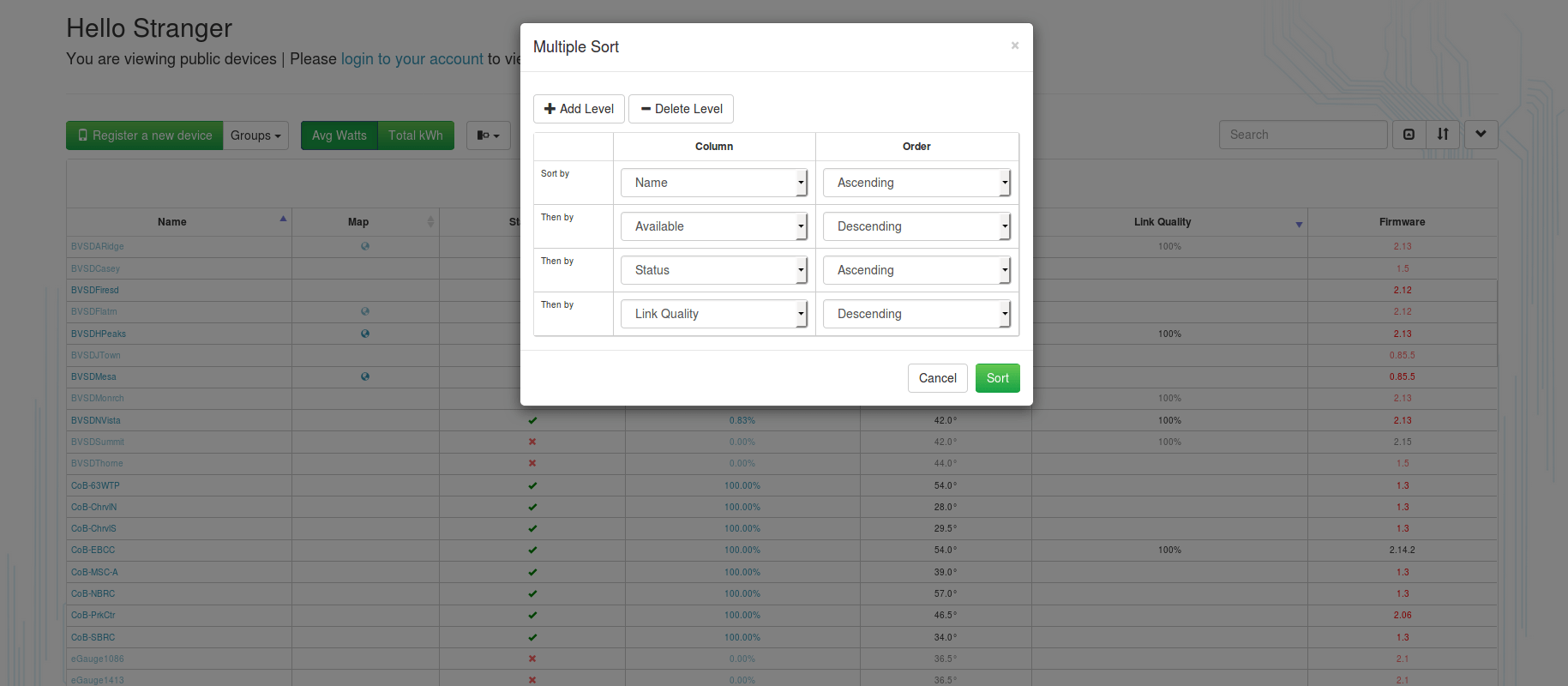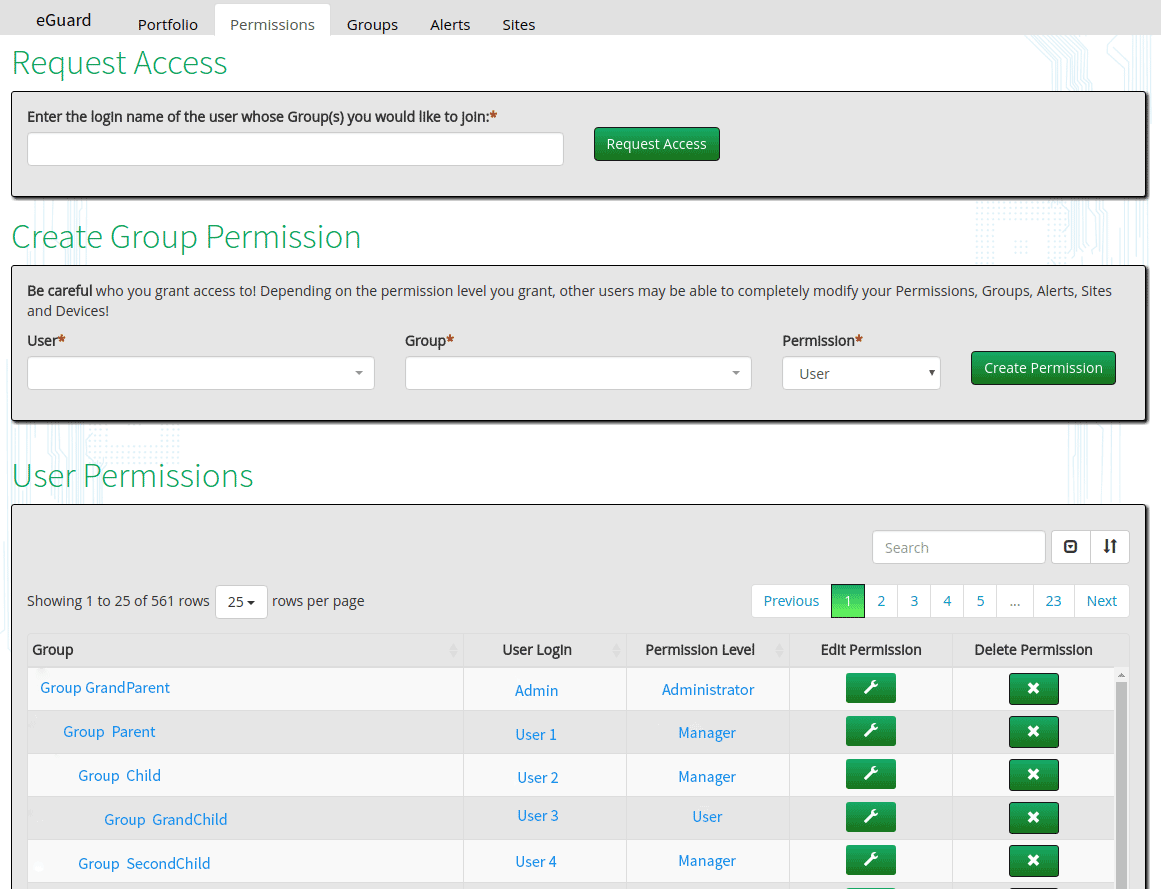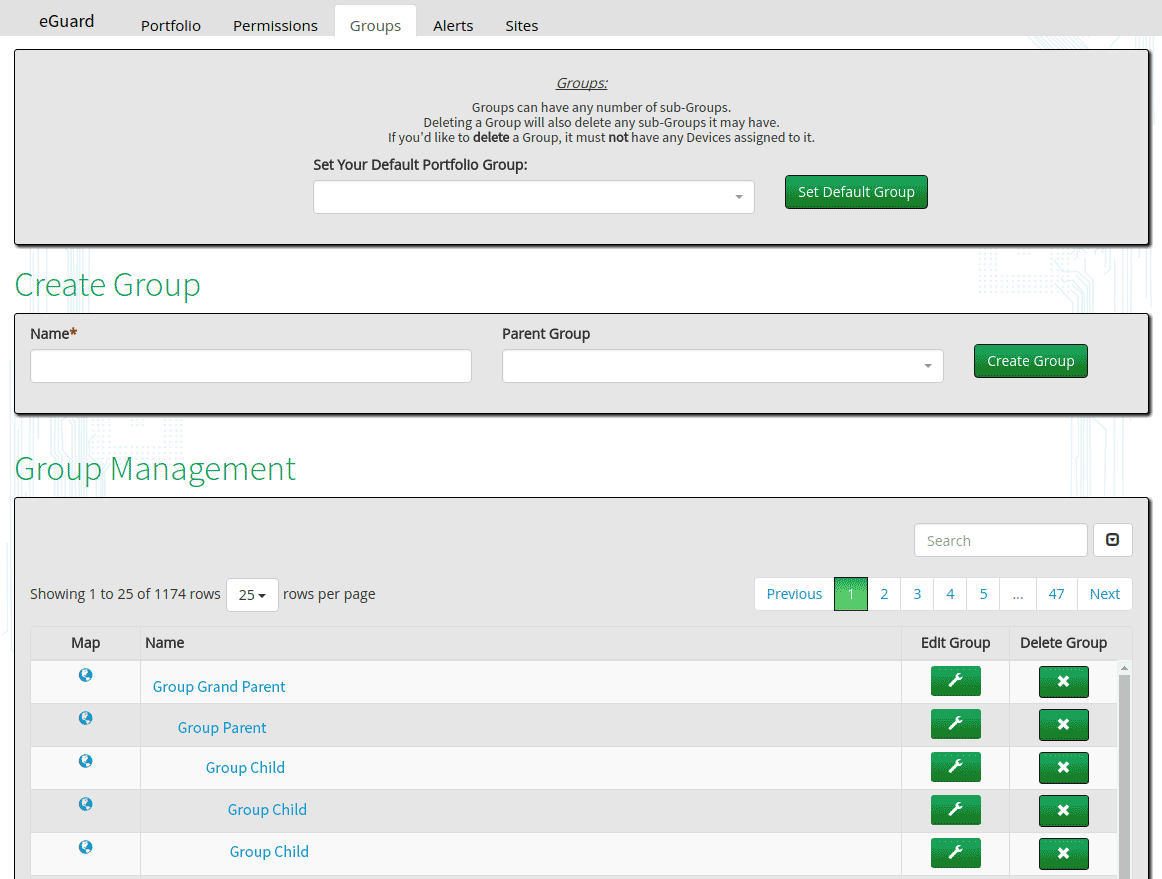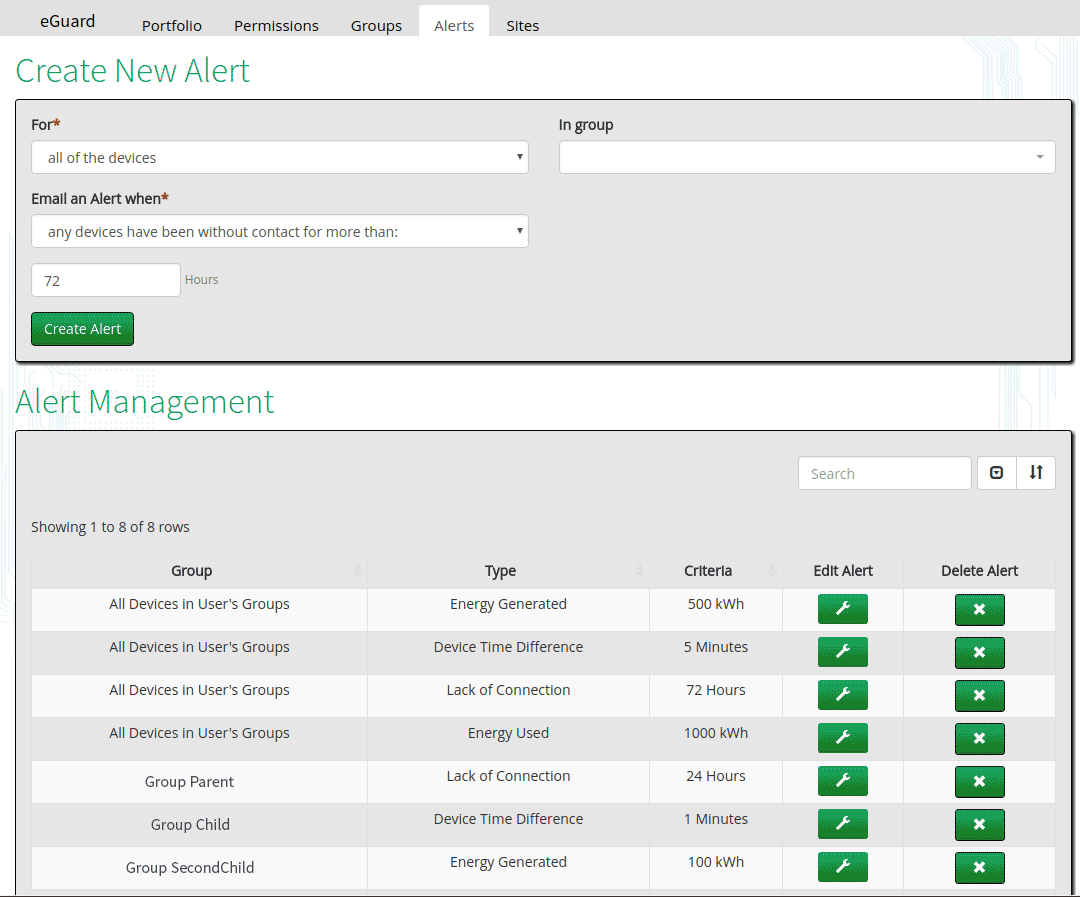eGuard Overview
eGuard is a free administrative management system for eGauge devices. It
provides an individual or company a means to monitor and manage multiple
energy monitors from a single, web-based interface. The interface
displays the current status and statistics for all devices within a
user’s account.
There is no cost to create or maintain an eGuard
account.
How it Helps You
eGuard makes the administration of multiple (5+) eGauge devices much simpler. It is an ideal tool for organizations that need to manage large numbers or widely dispersed eGauge devices. For eGauge users, eGuard also functions as a performance verification tool for judging specific metrics from many energy meters. The system also provides a means of troubleshooting hardware and customer relationship management. For example, installers can tie a customer's contact information and other relevant information to a single or group of eGauges. Together, these features provide customers a wide variety of tools that simplify large deployments of eGauge devices.
Common Applications:
- Tracking the energy performance of dispersed franchise locations
- Managing the kWh values for submetered tenants
- Measuring the generation of large solar PV arrays
- Sending alerts for unexpected measurements, functionality, and connectivity of a particular installation site
Accessing eGuard
eGuard access requires the creation of an account at egauge.net. From there, the user can request access to currently existing devices from an Administrator, or add their own devices by contacting support@egauge.net. eGuard can be accessed from a user's account settings .
Main Interface
The eGuard interface provides administrators with the ability to monitor a nearly unlimited number of units, simultaneously. It is loaded with many features, such as consolidating device data, changing device configuration, and storing site specific notes. In addition, eGuard can map your eGauge devices so you can find sites by location or even show off how many locations you manage.
Interface Features
Centralized Information
The eGuard Portfolio offers a centralized location on the web to view aggregate data from all your devices and is powerful enough to seemlessly do this for thousands of devices in the field.
Hourly Status Updates
eGuard will automatically update measurement statistics and device status in the overview page every hour. This allows users to determine the health of multiple systems at a glance.
Powerful Search Functions
Managers and System Administrators can utilize eGuard's search function to search by device name, job/site, and device label. As the number of registered units grows, users will still be able to quickly locate a specific unit.
eGauge Map
If location information (latitude and longitude) are entered into an eGauge unit, the Map function provides detailed geographical data, including satellite or street view images sourced from Google Maps. This functionality is disabled by default for security reasons.
Details and Configuration Page
The Device Detail page brings many configuration options for your individual eGauge devices into one place. Here, you can view and change existing configurations, enable or disable remote access, check for firmware upgrades, and store notes. In combination with a few other tools, the Device Detail page saves you time by presenting the most frequently used administrative tools in one place.
Features
Configuration
The eGuard Device page allows remote configuration of eGauge devices, with different options based on Manager or Administrator permissions.
Device and Site Notes
The job name and installer notes can be updated and saved on this page. A device can also be linked to a site you control, and the corresponding site can be edited.
Other Functions:
- Reset the password on a device
- Toggle remote administration control
- Change the remote register configuration
- Download the most recent firmware
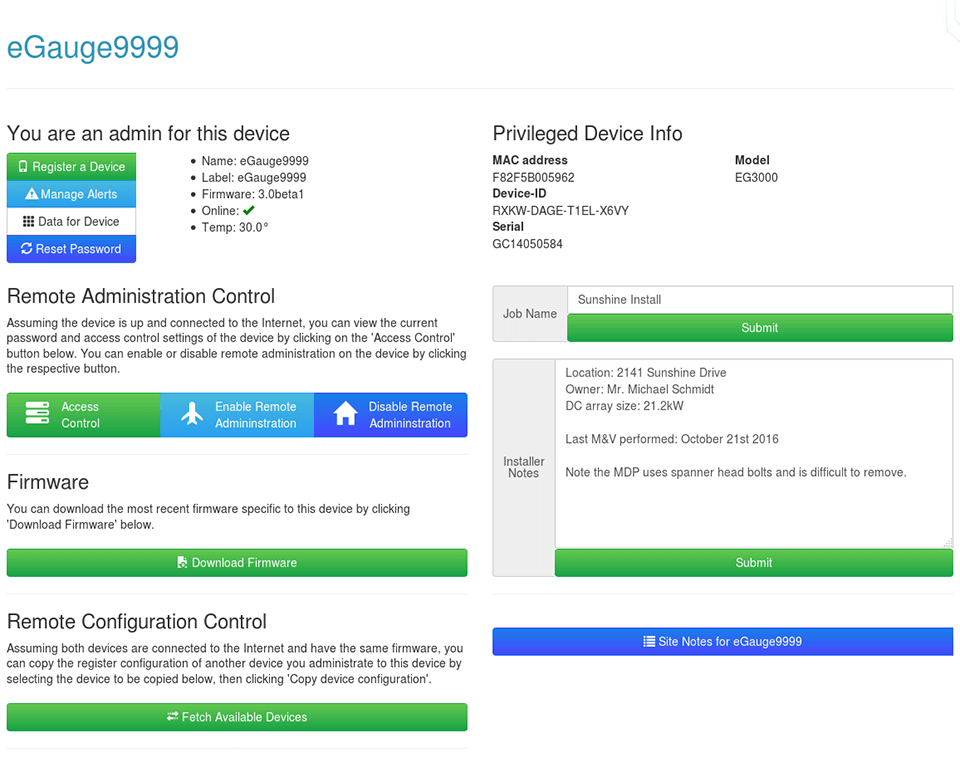
Permissions
eGuard features a hierarchy-based access system that allows for the creation of two user classes (Administrator and Manager) and multiple nested sub-groups. Each user class has specific permissions and viewing rights and can be created or managed from eGuard's Permissions page.
User Type and Permissions
User (most restricted)
View the permissions, groups, and devices assigned to them.
Manager
Creation/modification of groups and assignment/modification of devices within groups, in addition to User permissions.
Administrator
Assignment/modification of users in groups, in addition to User and Manager permissions.
Management Options
Permissions
Create and manage a user's access to your groups and their devices, with easy search and sort options. Users can request access to other users' groups as well as approve, modify, and remove access from the groups they administrate or manage.
Alerts
eGuard Alerts provide a way to ensure your energy use and/or generation is where you want it to be. eGuard can be configured to provide email alerts when a variety of conditions are met for your grouped devices. Alerts are sortable and searchable by group target, criteria, and type and include:
- Lack of Connection
- Energy Generated
- Energy Used
Sites
eGuard Sites allows devices to be linked to a specific installation site, and can be used for storing site information and reporting info. The linking of devices to a site is optional.
Devices
The eGuard Device page is another way to search and modify your devices' assignments to your groups. Assignments can be sorted by device name, label, jobname, or site.
Groups
eGuard Groups allows you to manage your grouping hierarchy and access for your devices. It allows for easy searching, creation, modification, and deletion of groups.
Could eGuard Replace Your Current Monitoring Platform?
Our sales team provides detailed presentations of eGuard so that you can determine if this free-to-use platform is right for you.
